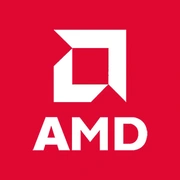AMD A10-6800K

AMD A10-6800K: A Comprehensive Review of the Obsolete APU in 2025
April 2025
1. Key Specifications: Architecture, Process Technology, and Key Features
Richland Architecture: A Legacy from the Past
The AMD A10-6800K, released in 2013, belongs to the accelerated processing unit (APU) lineup of the Richland architecture. It is the second generation of AMD's hybrid solutions that combine CPU and GPU on a single die. Key features include:
- 4 cores/4 threads based on the Piledriver microarchitecture (an improved version of Bulldozer).
- Clock Speed: 4.1 GHz (base) / 4.4 GHz (Turbo Core).
- Process Technology: 32nm — an outdated standard even for 2025.
- Integrated Graphics: Radeon HD 8670D (384 shader processors, 844 MHz).
Performance: Modest Results
As per Geekbench 6 tests (2025):
- Single-core: 486 points — lower than budget modern CPUs (for example, Intel Celeron G6900 — 1200+).
- Multi-core: 1175 points — comparable to Pentium Gold G7400, but without support for modern instructions.
Key Features:
- The ability to build a PC without a discrete graphics card for basic tasks.
- Unlocked multiplier for overclocking (even with air cooling).
2. Compatible Motherboards: Sockets and Chipsets
FM2 Socket: A Limited Platform
The A10-6800K uses the FM2 socket, which is incompatible with newer FM2+ or AM4/AM5. Suitable chipsets include:
- A55/A75/A85X — outdated models with support for PCIe 2.0 and SATA III.
- Board Examples: ASUS A85XM-A, Gigabyte GA-F2A75M-D3H.
Choosing Features in 2025:
- New boards are hardly available. Prices for remaining stock range from $60 to $80.
- Limited selection: most boards are available on the secondary market.
- No support for USB 3.1, NVMe, or Wi-Fi 6.
3. Supported Memory Types
DDR3-2133 MHz: A Limitation
The A10-6800K works only with DDR3 memory, which significantly limits performance in 2025:
- Maximum capacity: 64 GB (theoretically), but FM2 boards rarely support more than 32 GB.
- Dual-channel compatibility is mandatory to realize the potential of the iGPU.
Issues:
- DDR3 is slower than DDR4/DDR5 (current standards).
- High latencies (CL9-CL11).
4. Power Supply Recommendations
Power Calculation
With a TDP of 100W and no discrete graphics card:
- Minimum: 400W (e.g., EVGA 400 N1, $35).
- With headroom for upgrades: 500-600W (Corsair CX550, $60).
Tips:
- For overclocking, choose a PSU with an 80+ Bronze certification and stable +12V rails.
- Avoid cheap noname power supplies — they pose a risk to system stability.
5. Pros and Cons of AMD A10-6800K
Pros:
- Price: $50-70 (for new units, if you can find them).
- Integrated graphics for undemanding games (e.g., Dota 2 on low, 720p).
- Simple assembly for basic tasks.
Cons:
- Outdated architecture: No support for AVX2, PCIe 3.0, USB-C.
- High power consumption (100W compared to 35-65W of modern counterparts).
- No multithreading (4 physical cores without Hyper-Threading).
6. Use Cases
Gaming
- Capabilities: CS:GO, Minecraft, League of Legends on low settings (30-45 FPS).
- Limitations: Modern AAA titles (Cyberpunk 2077, Starfield) are unplayable even on minimum settings.
Work Tasks
- Office Applications: Microsoft Office, browsers with 10+ tabs.
- Media: Streaming 1080p video, basic editing in Shotcut (without effects).
HTPC (Home Theater PC)
- Supports 4K via HDMI 1.4a (only 30 Hz), H.264 decoding.
7. Comparison with Competitors
Intel Core i3-4130 (Haswell, 2013)
- Pros: Better single-threaded performance (+15%), support for AVX2.
- Cons: Integrated graphics HD 4400 is weaker.
Modern Analogues (2025)
- AMD Ryzen 3 5300G: 4 cores/8 threads, Radeon Vega 6, DDR4 — 3 times faster for $120.
- Intel Core i3-14100: 4 cores/8 threads, UHD 730, DDR5 — ideal for office work.
8. Practical Assembly Tips
- SSD is essential: Kingston A400 240 GB ($25) will speed up system boot.
- Cooling: The standard cooler is adequate, but for overclocking, consider the Deepcool Gammaxx 400 ($20).
- Case: Micro-ATX (Fractal Design Core 1100, $50) for compactness.
Sample Build (2025):
- CPU: AMD A10-6800K ($60)
- Motherboard: ASUS A85XM-A (used, $40)
- Memory: 16 GB DDR3-1866 ($30)
- Storage: 480 GB SSD ($35)
- PSU: EVGA 500 W1 ($40)
- Total: ~$205 (excluding case).
9. Final Verdict: Who is the A10-6800K Suitable For?
This processor is only relevant in very limited scenarios:
- Budget office PCs for Word/Excel.
- Entry-level servers (for example, file storage).
- Retro hardware enthusiasts experimenting with overclocking.
Why Not to Choose it in 2025:
Even new processors for $100 (Ryzen 3, Intel i3) offer 4-5 times higher performance, support for DDR4/DDR5, and modern interfaces. The A10-6800K is a choice only for specific tasks or nostalgic builds.
Conclusion: The AMD A10-6800K is a relic of the past, maintaining niche value in 2025. It should only be considered as a temporary solution or part of an experimental system. For any serious tasks, it’s better to look into modern APUs or CPUs.
Basic
CPU Specifications
Memory Specifications
GPU Specifications
Benchmarks
Compared to Other CPU
Share in social media
Or Link To Us
<a href="https://cputronic.com/index.php/cpu/amd-a10-6800k" target="_blank">AMD A10-6800K</a>